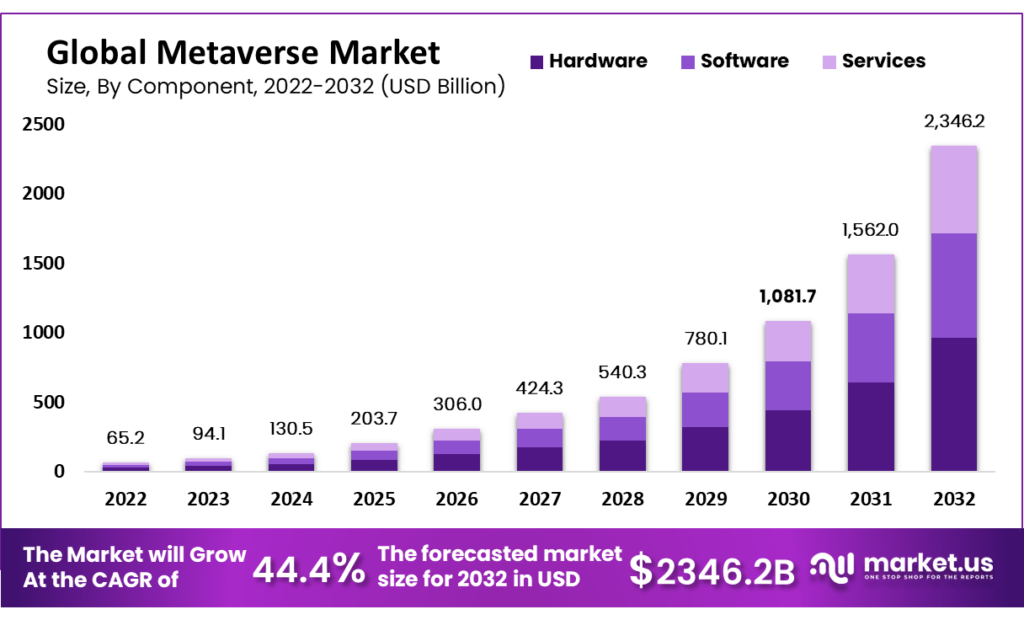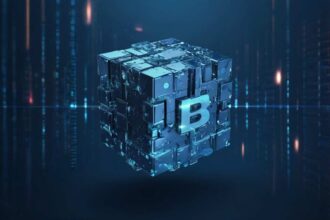Metaverse is here with us. I know we have all had a dream that we did not want to wake up from. But what if I told you that you can immerse yourself in a 3D virtual world through the metaverse and live your dream with your eyes wide open, would you believe it?
Metaverse is revolutionizing the digital world by giving rise to a new frontier of digital ownership and experience. Through this digital wonderland, you can build your own reality and make your extraordinary dream of owning assets a reality.
But how is this new technology powering digital ownership? Metaverse is tokenizing digital assets, decentralizing authentications, and promoting digital inclusivity and interactivity, hence revolutionizing digital ownership.
In this article, we will explore the amazing journey into the synergy between metaverse and digital ownership, while revealing the power of a space where the physical and virtual worlds converge, making ownership immersive, dynamic, and deeply personal in terms of experience. Read along to uncover the power of the metaverse on digital ownership!
Understanding Metaverse and the Technologies Around It
The word – metaverse – was coined by Neal Stephenson in 1992, in his cyberpunk novel ‘Snow Crash,’ far before the technology became a reality. But you might be wondering what this buzzword means!
Metaverse means a post reality universe that converges a virtual world with physical reality in an environment that supports multi user access and interactivity. This environment is a construct of both Virtual Reality (VR) and Augmented Reality (AR) technology which supports access to digital assets, activities, and people.
That said, the metaverse is a network of sociable and immersive multi user platforms that is powered by blockchain technologies and NFTs. Furthermore, NFTs and cryptocurrencies facilitate ownership of virtual assets through shaping digital identity and control which allows users to own and sell art, collectibles, and real estates.
How Metaverse Powers Digital Ownership?
Now, let’s dive into how this technology is powering digital ownership:
Tokenizing Digital Assets
In the past, digital items such as in-game objects or digital art were owned by the service provider or the platform offering the service, and users only had rights to view or use them through purchasing a license. However, recently users can now own and even trade with these in-game objects and arts. Basically, this ownership and control is facilitated by tokenization of these assets which rather converts them into Non Fungible Tokens (NFTs).
Tokenization is the process of converting fictional assets into tokens that hold real-world value. The tokens act as representation of pieces of art, in-game items, virtual real estates, and even avatar wearables. These assets are usually tokenized to facilitate verifiability and tamper-proofness hence making them secure.
Through tokenization, more investors are finding ownership of NFTs a worthy venture. For instance, according to a report by Enterprise Apps Today, the growth rate of the NFT market is expected to rise at a CAGR of 18.55% starting from 2023 to 2027. This implies that through tokenization of digital assets, metaverse is emerging as a game-changer in digital ownership.
Decentralizing Authentications
The ultimate power of the metaverse lies in decentralization of control and access to digital assets. Through integration with the blockchain technology, metaverse is moving towards solving the issues of traditional authentication and verification where only a few firms could control access to platform specific assets.
With blockchain technology ingrained into the metaverse, individuals can now operate without central authority, hence facilitating more autonomous and secure access to digital assets, data, and identities. This produces a more user-centric and democratic virtual world.
Metaverse is also massively transforming the realm of digital ownership through enhancing verifiable user identification thus making authentication of these users quite easy. The users can generate, establish, and maintain cryptographic keys which lowers risk of identity theft and makes authentication easier.

Promoting Digital Inclusivity and Interactivity
In today’s world, there are notable differences between the physical and economic limitations brought about by the physical locations. For instance, for you to trade with someone in Japan while in the USA, you must convert your money from US dollar to Japanese Yen to facilitate the transaction. This hindrance is caused by the difference in locations, which in turn disrupt free trade.
Such limitations have created the need for a virtual world, metaverse, where people can interact and trade freely. Through this technology, individuals can interact and communicate with each other using avatars and visual representation as well as trade using cryptocurrencies which are accepted all over the network. Basically, this makes it easier for people to own property or be members of inclusive and interactive communities.
According to a report 59% of users are excited about transitioning their everyday activities to the metaverse. And 57% of the companies say that they are adopters.”
Communities are a vital concept in web3. Here are the top 7 communities you should know as writer.
Blockchain-Based Operations
Since metaverse has become more common and is experiencing high volumes in terms of data, value and need for reliability and security, the blockchain technology has come in handy. This technology has proven to be very important through providing users with digital proof of ownership and facilitating users to safeguard their digital assets.
The blockchain technology is enhancing validation of data and adoption of other technologies like Artificial Intelligence (AI) to help in safeguarding the diverse and abundant data. Through eliminating centralized control and access, blockchain-based virtual worlds are promoting more ownership of assets in the digital world.
Immersive Digital Environment
By utilizing augmented and virtual reality, metaverse facilitates an environment where users can enjoy immersive experiences that merge both the virtual and the real world. The AR and VR technologies bring about the potential for online games, concerts, plays, professional meetings and educative lectures to life, thus making them feel more real.
Through these two technologies, metaverse is gaining a lot of traction and buzz that is amazingly transforming digital ownership. Immersive games, for instance, promote digital ownership whereby more users are thrilled and convinced to acquire the in-game assets which hold real world value.
Conclusion
Through the introduction of blockchain technologies and NFTs, the science of metaverse has become a reality. Through tokenization of digital assets, decentralized authentications, digital inclusivity and interactivity, blockchain-based operations, and immersive digital experiences, this technology is imminently reshaping the frontier of digital ownership.
Is AI capable of transforming the crypto industry? Here is everything you need to know!
Frequently Asked Questions
How Does Metaverse Affect Businesses?
The metaverse provides a huge opportunity for businesses to interact with customers in a more interactive manner and develop new streams of revenue. Nonetheless, it will necessitate businesses to experiment with this new technology. Businesses that will adopt this technology effectively will be poised for success in the digital world.
Which are the Most Popular Metaverse Platforms?
The most popular metaverse platforms include Decentraland, The Sandbox and Somnium Space. These platforms provide users with the ability to create and tailor virtual environments to your needs, trade assets and earn real money from metaverse activities.
Is Web3 and Metaverse the Same?
While both use the blockchain and crypto technologies, they work quite differently. The metaverse for instance, employs integration with other technologies such as Virtual Reality and Augmented Reality while Web 3 employs other technologies like dApps. Nonetheless, these two technologies work alongside each other to create a decentralized online environment.



















